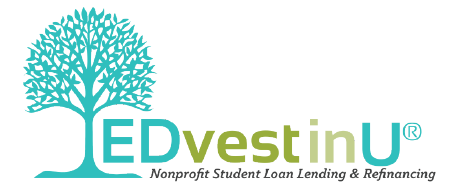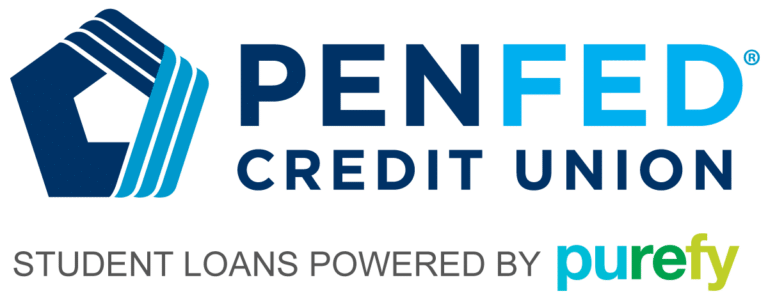Our goal is to give you the tools and confidence you need to improve your finances. Although we receive compensation from our partner lenders, whom we will always identify, all opinions are our own. Credible Operations, Inc. NMLS # 1681276, is referred to here as "Credible."
Paying off large student loans quick can feel like an impossible task. Many borrowers graduate from a bachelor’s degree program with nearly $25,000 in student loans, according to the Department of Education, and repaying this level of debt can be challenging.
Thankfully, there’s more than one strategy you can use to repay your student loans. Some borrowers make extra monthly payments and earn an autopay discount. Other borrowers can refinance or take advantage of tax deductions.
Use the following strategies and information as a guide to help you pay off large student loan debt.
- How to pay off large amounts of education debt
- How long does it take to pay off large loans?
- Is it smart to pay off loans early?
8 strategies to pay off large student loans
Every borrower’s situation is unique, particularly when it comes to paying off large amounts of education debt. Consider your potential fit for these eight strategies.
1. Consider refinancing
If you think you can repay your student loans in fewer years than the original term, or if you have student loans with very high interest rates, you may want to consider refinancing. Refinancing involves replacing your current loan with a new loan, one that ideally will have either a lower interest rate or shorter term.
Some of the benefits of refinancing include:
- Getting a lower interest rate
- Lower monthly payments with an extended repayment term
- Paying off your balance faster with a shorter repayment term
- Releasing a cosigner from your original loan
Important: Refinancing isn’t the right choice for all borrowers, especially since there are drawbacks. For instance, if you refinance a federal loan into a private loan, you won’t be eligible for any federal forgiveness or repayment programs. You may want to consider consolidating your federal education debt into a Direct Consolidation Loan instead. Talk to your loan servicer or a student loan counselor before refinancing.
By visiting Credible, you can learn more about student loan refinancing and compare rates from multiple lenders.
The student loan refinancing companies in the table below are Credible’s approved partner lenders. Because they compete for your business through Credible, you can request rates from all of them by filling out a single form. Then, you can compare your available options side-by-side. Requesting rates is free, doesn’t affect your credit score, and your personal information is not shared with our partner lenders unless you see an option you like.
| Lender | Variable rates from (APR) | Fixed rates from (APR) |
|---|---|---|
 Credible Rating      View details View details | 4.54%+ | 3.95%+ |
| ||
 Credible Rating      View details View details | 5.39%+1 | 5.39%+1 |
| ||
 Credible Rating      View details View details | 5.24%+2 | 5.24%+2 |
| ||
 Credible Rating      View details View details | 7.41%+5 | 7.41%+5 |
| ||
 Credible Rating      View details View details | 3.99%+3 | 4.83%+3 |
| ||
 Credible Rating      View details View details | 6.61%+4 | 5.61%+4 |
| ||
 Credible Rating      View details View details | 4.54%+ | 4.49%+ |
| ||
 Credible Rating      View details View details | N/A | 5.5%+ |
| ||
 Credible Rating      View details View details | N/A | 5.49%+ |
| ||
 Credible Rating      View details View details | N/A | 5.29%+ |
| ||
| Compare personalized rates from multiple lenders without affecting your credit score. 100% free! Compare Now Trustpilot | ||
| All APRs reflect autopay and loyalty discounts where available | 1Citizens Disclosures | 2College Ave Disclosures | 5EDvestinU Disclosures | 3 ELFI Disclosures | 4INvestEd Disclosures | 7ISL Education Lending Disclosures |
2. Apply for loan forgiveness
The CARES Act of 2020 was designed to provide economic assistance to a variety of Americans, including student loan holders. Federal student loan repayments were suspended with a 0% interest rate — and collections were halted — until 60 days after June 30, 2023.
Good to know: The federal government also offers a variety of other forgiveness programs for qualifying borrowers including Public Service Loan Forgiveness for government and not-for-profit employees and Teacher Loan Forgiveness for educators serving low-income schools.
3. Stick to a budget
This can help you afford your minimum monthly payment comfortably. It can also help you increase your monthly payment to repay your loans faster.
Make a list of your monthly expenses and how they compare to your monthly income. This will help you identify which percentage of your income is devoted to your minimum monthly payment. When you see an area where you can cut back on spending, you might devote that extra money toward your loans each month.
4. Make additional payments
Making additional payments each month can significantly reduce the overall amount you’ll repay in interest.
For example: If you have a $10,000 balance on a 10-year term at a 5.00% interest rate, you’ll have a monthly payment of $106 and pay $2,728 in overall interest.
But if you were to make an additional payment of only $20 per month, you’ll lower your overall interest payment to $2,165 — that’s almost $600 in total savings just by devoting an extra $5 per week to your loans.
Use a student loan repayment calculator to see how much additional payments could save you over the lifetime of your loan.
5. Set up automatic payments
Some lenders offer a discount on automatic payments. For instance, federal loan servicers offer an interest rate deduction of 0.25 percentage points for automatic payments made on Direct Loans. Many private lenders offer the same discount.
Missing your monthly payment by even a single day can result in serious consequences. Automatic payments help ensure that your monthly payment is paid on time.
6. Use discounts to lower your interest rate
Discounts lowering your student loan interest rates are typically small, but any savings is worth securing. Scheduling automatic payments can provide you with a discount of 0.25 percentage points or more depending on the loan servicer.
There are also other discounts available that you may qualify for. Some banks offer discounts if you refinance your student loans with them. Other lenders may offer discounts to borrowers simply for graduating, earning good grades, or opening a second account (perhaps for savings or checking).
Talk to your lender about any discounts you may be eligible for.
7. Take advantage of tax deductions
Borrowers repaying their student loans may be eligible for tax deductions.
| Tax deduction | Details |
|---|---|
| Student loan interest deduction | A deduction for the interest paid, up to $2,500 per year. |
| 529 plan funds | Some 529 plans allow you to use the funds to repay up to $10,000 in student loans without taxing withdrawal amount. |
8. Ask your employer about repayment assistance
Some employers offer repayment assistance programs. While many of these programs are available to eligible full-time employees, some companies offer monthly matching programs to part-time employees as well. Talk to your employer about its programs.
These employers currently offer employee student loan repayment assistance:
- Aetna will match repayments up to $2,000 per year up to a maximum of $10,000.
- Google will match up to $2,500 per year to employee student loan repayment.
- New York Life offers $170 monthly over a period of five years towards student loans in good standing.
- Western Union offers a $50 monthly contribution to employee student loans.
How long does it take to pay off student loans?
This can vary depending on the type of loan you take out, whether it’s federal or private.
When you take out a federal student loan, you’re assigned a 10-year loan term. You can switch repayment plans, to a term ranging from 10 to 30 years.
Private student loans depend on the lender, usually ranging between 5 and 20 years.
| Loan type | Term length (years) |
|---|---|
| Federal Direct Subsidized | 10 |
| Federal Direct Unsubsidized | 10 |
| Federal Direct PLUS | 10 |
| Federal Direct Consolidation | 10-30 |
| Private loans | 5-20+ |
Keep in mind: Repayment programs are available for qualified federal student loan borrowers. Some private loan servicers may also allow you to refinance to a different term length, or pause your repayment via forbearance.
Is it smart to pay off student loans early?
It depends on your financial situation. You’ll also hear conflicting advice when it comes to which method is best for paying off your student loans quick. Some experts suggest paying off your loans early to avoid paying unnecessary interest costs; others will advise you to pay them off in a way that ensures you’re still financially comfortable.
Pros of paying off your student loans early:
- You accrue and pay as little interest as possible
- You remove a financial obligation
- You free up your debt-to-credit ratio which might allow you to pursue other financial goals
Cons of paying off your student loans early:
- You might put a strain on your finances
- You’ll have less money to devote to other payments or debts
- You may have to reduce your lifestyle expenses in the short term
- You might not be able to fully take advantage of employer reimbursement or federal forgiveness programs
Remember, the best strategy for repaying your student loans will always be the one that aligns with your unique budget, lifestyle, and financial goals.
About the author  Nick Dauk
Nick Dauk
Nick Dauk is a Credible authority on personal finance. His work has been featured in Business Insider, The Edge, Bisnow, The Telegraph, BBC, and Culture Trip.
Read More
Home » All » Student Loan Refinancing » How to Pay Off Large Student Loans
